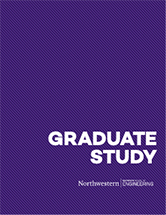Piecing an Enormous Puzzle Together
Truong Vo (MLDS '25) shared his research findings for a new machine learning algorithm at the IEEE International Conference on Big Data.

The world record for most pieces in a jigsaw puzzle is 551,232 pieces.
The idea of one person trying to put those pieces together is overwhelming, but having multiple people work together makes the task a little easier. A total of 1,600 students from the University of Economics of Ho Chi Minh City in Vietnam collaborated on the puzzle, and it still took them 17 hours just to break the puzzle into sections.
Now imagine trying to complete a puzzle 10 times that size, with individual pieces spread all over the world. That is essentially the challenge machine learning models face with complex datasets like financial transactions or medical records. No single computer can handle all of the information alone. But what if multiple computers could efficiently collaborate like the university students did on the puzzle?
That was the question Truong Vo (MLDS '25) explored for a research project with MLDS director Diego Klabjan. Their answer was an algorithm that helps models learn from distributed data while reducing delays and computational costs.
The project, titled "Stochastic Large-scale Machine Learning Algorithms with Distributed Features and Observations," created a way to enhance scalability while making machine learning more efficient for complex applications.
The two presented their work at the 2024 Institute of Electrical and Electronics Engineers (IEEE) International Conference on Big Data.
"I have always been fascinated by how machine learning can be applied to large-scale data challenges, particularly in fields like finance, healthcare, and e-commerce, where data is inherently distributed," Vo said. "The challenge of designing an optimization algorithm that balances computational efficiency and theoretical soundness was compelling."
Vo shared his research interest with Klabjan soon after being accepted to MLDS. He wanted to be involved with a project outside of the classroom that would enhance his educational experience and prepare him to eventually pursue a PhD.
The two connected and came up with the research topic in June 2024, three months before Vo actually began the program.
Vo was not initially familiar with the distributed optimization techniques or stochastic algorithms used in their final algorithm. The biggest challenge was navigating the steep learning curve and balancing the demands of the project with his other academic commitments.
The work was worth it, particularly when their research was accepted for publication by IEEE.
Klabjan was an incredible resource throughout the process, Vo said.
"I worked closely with him to analyze theoretical aspects, design computational experiments, and interpret results," Vo said. "He also provided critical feedback on our research paper and helped me refine my conference presentation."
Presenting at the IEEE conference was another valuable experience for Vo. He and Klabjan shared their work with a broader audience of researchers and industry professionals.
"We received valuable feedback and engaged in insightful discussions with experts tackling similar challenges in large-scale machine learning," Vo said. "It was particularly rewarding to see interest in our approach from researchers working on real-world distributed learning problems."
The conference also reinforced key lessons Vo is learning in MLDS, particularly around the importance of clear and effective communication. It was an experience Vo appreciated and that will continue to influence the rest of his time in MLDS.
"Attending the conference broadened my perspective on how interdisciplinary large-scale machine learning is, with applications spanning finance, healthcare, and numerous other industries," he said. "Engaging with other researchers and learning about the latest advancements in distributed optimization was incredibly insightful."

